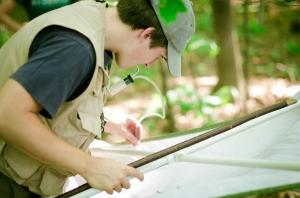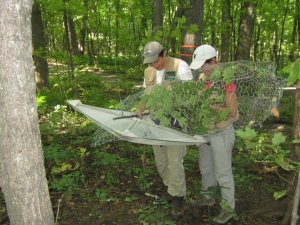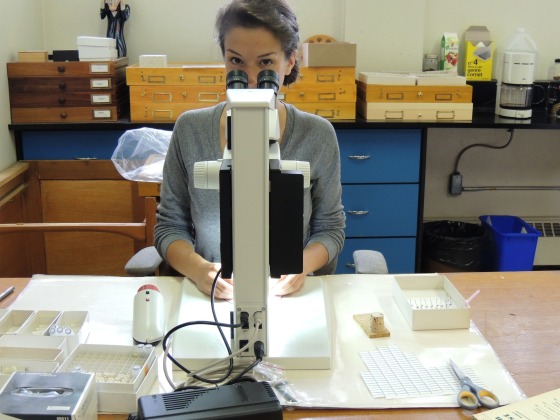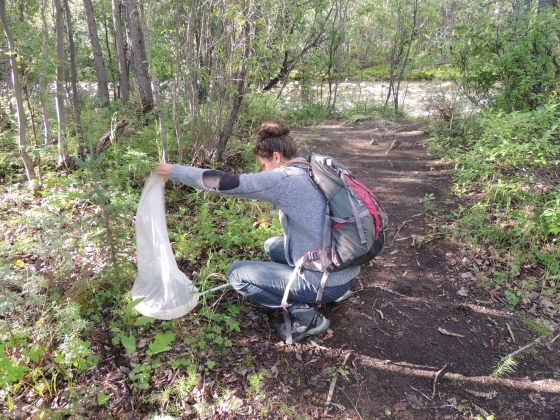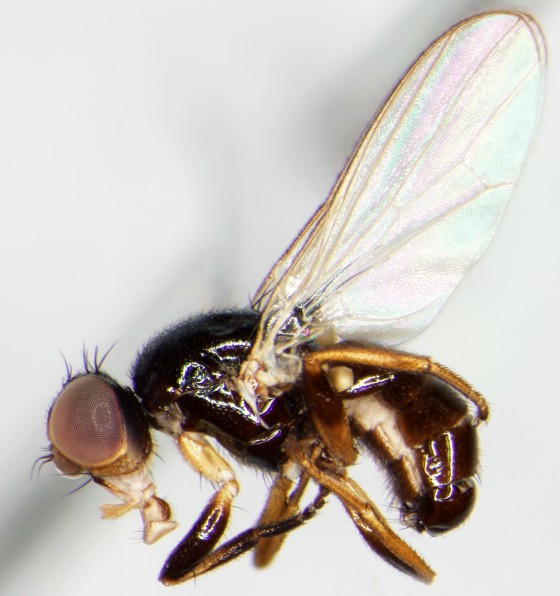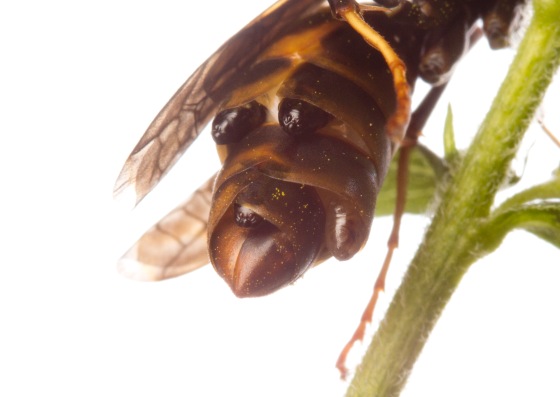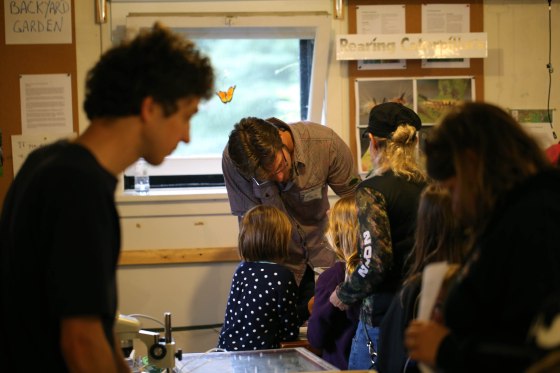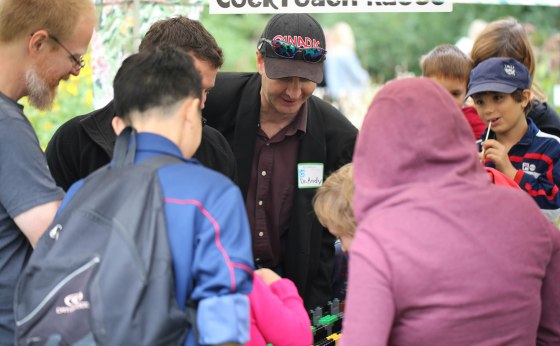As a graduate student, publishing a paper is a big deal. After spending countless hours doing the research, slogging through the writing process, soliciting comments from co-authors, formatting the paper to meet journal guidelines, and dealing with reviewer comments, it’s nice to finally get that acceptance letter and know that your work is getting out there.
We want to help publicize graduate student publications to the wider entomological community. Every month or so, the ESC Student Affairs Committee will post a roundup of papers authored by Canadian graduate students.
We don’t anticipate that these lists will be comprehensive (alas, Google Scholar alerts aren’t perfect), but should give a nice ‘taste’ of student entomological research in Canada. If you want your recently published article featured (or we missed yours last month!), send us an email at entsoccan.students@gmail.com
For regular updates on new Canadian entomological research, you can join the ESC Students Facebook page or follow us on Twitter @esc_students.
Without further delay, here’s what entomology grad students have been up to lately (articles published online between December 1, 2014 and January 18, 2015):
Behaviour and Physiology
Miruna Draguleasa (University of Toronto) and colleagues found that apparently bumblebees love caffeine just like many sleep-deprived grad students.
Two students, Carling Baxter and Rachael Barnett, and their colleagues at McMaster University found that male fruit flies become less choosy when selecting mates as they age.
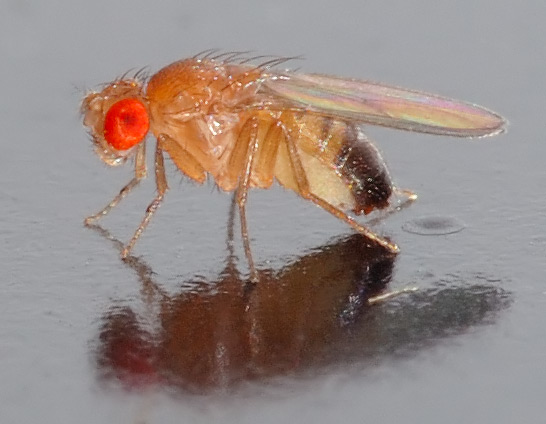
Older male fruit flies (Drosophila melanogaster) are less choosy. Photo by André Karwath aka Aka (Own work) [CC BY-SA 2.5 (http://creativecommons.org/licenses/by-sa/2.5)%5D, via Wikimedia Commons
Laura Ferguson (University of Western Ontario) helped to determine that modifications of ion balance mediate cold tolerance in Drosophila.
The downside of being a sexy male tree cricket? You might not live very long. Kyla Ercit (University of Toronto Mississauga) and colleagues found that male Oecanthus nigricornis individuals with wide heads and small legs were most attractive, but individuals with narrow heads, large legs, and intermediate pronotum length were most likely to survive.
Rosemarie Vallières (Université Laval) and colleagues found that metabolism and winter survival of temperate hemlock looper populations in Québec will be more affected by fall heat waves (compared to boreal populations), which are increasing in frequency due to climate change.

Hemlock looper adult. Photo by D. Gordon E. Robertson (Own work) [CC BY-SA 3.0 (http://creativecommons.org/licenses/by-sa/3.0) or GFDL (http://www.gnu.org/copyleft/fdl.html)%5D, via Wikimedia Commons
New research by Fanny Maure (Université de Montréal) found that ladybirds can survive (and even reproduce!!) after parasitism and behavioural manipulation by a wasp. Featured on the cover of the November 2014 issue of National Geographic Magazine, and discussed in a fantastic accompanying article by Carl Zimmer.
Does the Earth’s magnetic field serve as a reference for alignment of the honeybee waggle dance? Short answer: At least local (ambient) geomagnetic field does not act as the reference for the alignment of waggle-dancing bees. Read more on the research conducted by Veronica Lambient and colleagues at Simon Fraser University here.
Ecology
A recent study by Dorothy Maguire (McGill) and colleagues in a Quebec forest ecosystem finds strong top-down effects of predators on arthropods, but weak effects of fragmentation on predation and herbivory levels.

Students from McGill’s Buddle Lab collecting insects using a beat sheet, sampling bird exclosures, and measuring damage on leaves. Photos courtesy of Dorothy Macguire.
Guillaume Sainte-Marie (Université du Québec à Montréal) and colleagues found that promoting hardwoods does not appear to reduce spruce defoliation during outbreaks of spruce budworm.
Crisia Tabacaru (University of Alberta) and colleagues determined that competitors and natural enemies may help prevent establishment of mountain pine beetle after fires.
Gun Koleoglu and Tatiana Petukhova (University of Guelph) found that Africanized honey bees may have higher viral resistance than European honey bees following parasitism by Varroa mites.
Researchers at the University of Alberta, including Devin Goodsman, found that the interactions between a lepidopteran defoliator and a bark beetle shifted from facilitative to competitive depending on outbreak severity.
Sean McCann and Catherine Scott (Simon Fraser University) discovered that the red-throated caracara rivals the predatory impact of army ants on some populations of Neotropical social wasps.
Genetics
A new molecular marker for phylogeographic and population studies of the black-legged tick has been identified by Chantal Krakowetz (University of Saskatchewan) and colleagues. And in a follow-up study, the mitochondrial gene variation could point to origins of tick populations in the United States and the potential risk for Canada.

A deer tick, Ixodes scapularis. Photo Credit : Jim Gathany [Public domain], via Wikimedia Commons
Pest Management and Biological control
Two studies conducted at the Université de Montréal by Julie Faucher-Deslile and colleagues found protein content is not the only factor important in selecting diet supplements for predatory mites and that supplementing predatory mite applications with apple pollen may increase the control of thrips in greenhouses.
Insects used in modern weed biological control programs are highly host-specific to their target weed, but can sometimes exhibit ‘spillover’ herbivory on related nontarget plants. Determining where and why spillover occurs can help us predict its potential to negatively affect native plant populations. Here, Haley Catton (UBC Okanagan) and colleagues used two field experiments to show that a controversial biocontrol weevil exhibits spillover when at high density, but does not find or feed on nontarget plants even a few metres from release points. This is good news, as the more localized the spillover, the lower the chance of negative population-level impacts to nontarget plants.
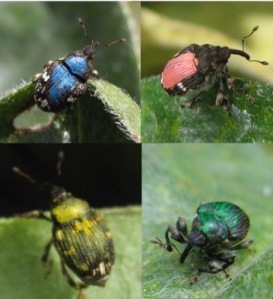
Mogulones crucifer biocontrol weevils painted for a mark-release-recapture experiment involving target and nontarget host finding. Image by Haley Catton.
Christine Miluch (University of Alberta) and colleagues looked at how to maximize the attractiveness of pheromone traps to diamondback moth males in canola.
An interesting study conducted by Simon P. W. Zappia and Amber Gigi Hoi found that regardless of how energy-deprived they are, DEET will keep mosquitos off your stinky socks!
A Canadian research team from Simon Fraser University, including graduate students Michel Holmes and Jason Draper, has identified the bed bug aggregation pheromone! The discovery was featured at several media outlets, including “Wired”.
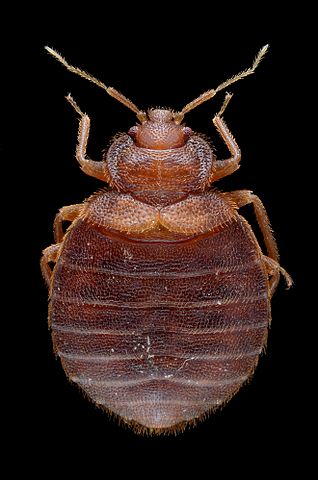
A female bed bug. By Gilles San Martin from Namur, Belgium (Cimex lectularius (bed bug)) [CC BY-SA 2.0 (http://creativecommons.org/licenses/by-sa/2.0)], via Wikimedia Commons
The ESC Student Affairs Committee


